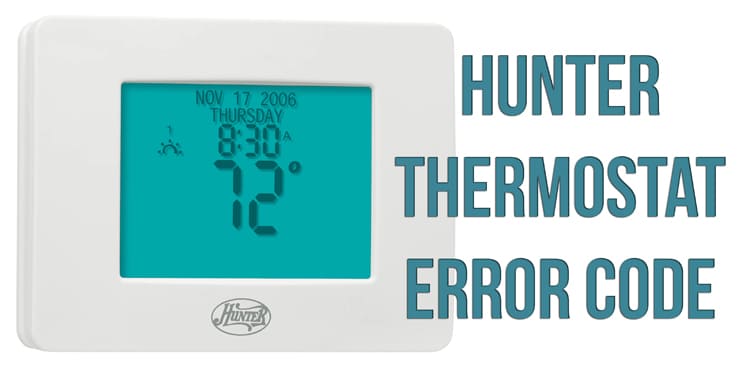The Hunter thermostat is a sophisticated device designed to regulate indoor temperature in a highly efficient way. This intelligent machine is designed to maintain comfortable living conditions by controlling your heating and cooling system effectively. However, like all technological devices, it can experience glitches or problems, signified by error codes. Understanding these error codes is paramount to efficient troubleshooting, ensuring optimal functioning and longevity.
Understanding Error Codes
Error codes are essentially the ‘language’ your Hunter thermostat uses to communicate when there’s a problem that needs your attention. Each error code corresponds to a specific issue. Decoding them helps you understand the problem better and often allows you to fix minor issues without the need for a technician.
Common Hunter Thermostat Error Codes
- Low Battery Indicator: The most common error code is a flashing battery symbol. This suggests that your thermostat’s batteries are running low and need replacement. Typically, replacing the batteries with new ones resolves the issue.
- Erratic Display: An erratic or blank display signifies that the thermostat might be experiencing technical issues. In many cases, a simple reset will rectify this issue. If not, it may require expert attention.
- Error Code E1 or E2: These codes indicate issues with the temperature sensors. E1 typically signals an open circuit in the indoor temperature sensor, while E2 suggests a short circuit. Resolving these issues might require professional assistance.
- Error Code E3 or E4: These indicate problems with the remote sensor, similar to the E1 and E2 codes but relating to the remote sensor specifically.
Addressing Error Codes
- Resetting the Device: Many times, a simple reset can fix minor issues. It’s similar to restarting your computer when it’s slow or unresponsive. For the Hunter thermostat, you can generally reset the device by pressing and holding the “Program” button followed by the “Time” button. Check your user manual to confirm, as the reset process may vary by model.
- Replacing Batteries: If the low battery indicator is flashing, replace the batteries. Ensure you’re using the correct type and polarity is properly aligned.
- Contacting a Professional: For error codes E1, E2, E3, and E4, it’s advisable to contact a professional HVAC technician. These issues often involve the thermostat’s internal components, which need careful handling.
Preventive Measures
- Regular Maintenance: Regularly check your thermostat and its surroundings. Ensure it’s clean and free from dust, which can hinder its performance.
- Proper Installation: Ensure your thermostat is installed in a suitable location. Avoid areas with direct sunlight, drafty areas, or near heat-generating appliances, as these can cause incorrect readings.
- Regular Battery Check: It’s advisable to replace your thermostat’s batteries annually or when the low battery indicator appears.
Conclusion
While the Hunter thermostat is a reliable device, understanding the error codes can help you troubleshoot issues more effectively. A basic knowledge of what these codes mean will not only allow you to maintain your thermostat better but also avoid unnecessary service costs. However, when in doubt, always consult a professional technician to ensure your thermostat continues to work efficiently, keeping your home comfortable in every season.
